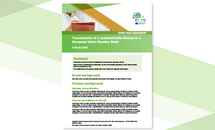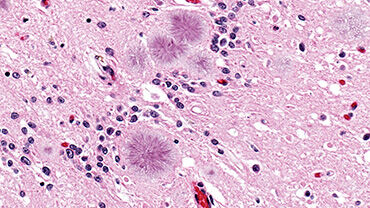Risk assessment: The risk of variant Creutzfeldt-Jakob disease transmission via blood and plasma-derived medicinal products manufactured from donations obtained in the United Kingdom
In February 2021, the United Kingdom (UK) lifted its ban on the use of UK-sourced plasma to produce immunoglobulin products. The UK assessed the variant Creutzfeldt-Jakob disease (vCJD) risk for immunoglobulin products manufactured from UK plasma as very low and acceptable in the context of overall vCJD risk in the general population, taking into consideration a risk-benefit analysis. The presence of transmissible proteinaceous infectious particles – called prions (PrPSc) –have been linked to vCJD among asymptomatic blood and plasma donors. Therefore, the European Centre for Disease Prevention and Control (ECDC) assessed the risk to the European Union and European Economic Area (EU/EEA) of the presence and the possible transmission of PrPSc by blood and plasma-derived medicinal products (PDMPs) manufactured from donations obtained in the UK.
Executive Summary
The prevalence of vCJD-related PrPSc in the UK blood donor population is likely to broadly mirror the prevalence of PrPSc in the UK population as a whole. Evidence from retrospective cohort studies using peripheral lymphoid tissue suggests that the underlying prevalence of people that may be in the vCJD carrier state is in the order of 0.05%, although there remains much uncertainty around this estimate. The contrast between the estimated prevalence of vCJD-related PrPSc and the reported number of clinical vCJD cases seen to date strongly suggests that those in whom PrPSc is detected through an antemortem lymphoid tissue survey may never develop any symptoms of prion disease. Further uncertainty exists regarding the extent to which individuals who may be carrying PrPSc as latent or subclinical vCJD infection are capable of transmitting the infection to others, including through donation of blood and blood products.
The vCJD infection risk from the donations and final products is decreased by the safety measures implemented to reduce the risk of donation by exposed donors and during whole blood processing or plasma fractionation. However, the absence of a reliable diagnostic blood test makes it difficult to assess the residual risk for transmission of vCJD infection through blood components and PDMPs obtained from UK-sourced blood and plasma donations with any degree of confidence.
Options for response
In order to determine whether the use of immunoglobulins and other PDMPs produced from UK plasma would pose an increased threat, EU/EEA countries may consider assessing their endogenous risks, evaluating product-specific data packages (including the prion-reduction capacities of applied fractionation procedures), and balancing the assessed threat with the supply need for PDMPs and source plasma in their country. Until such data are available, EU/EEA countries may consider, as a precautionary measure, preventing the use of immunoglobulins and other PDMPs derived from UK plasma, as well as the fractionation of UK plasma in EU/EEA facilities.
Download
Note: The scope of this document was clarified in a section added to page 2 on 11 July 2022.







